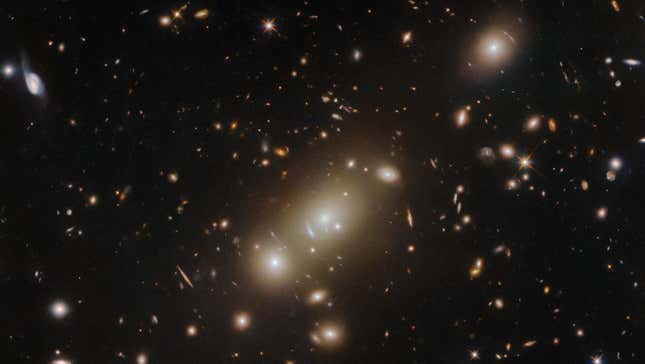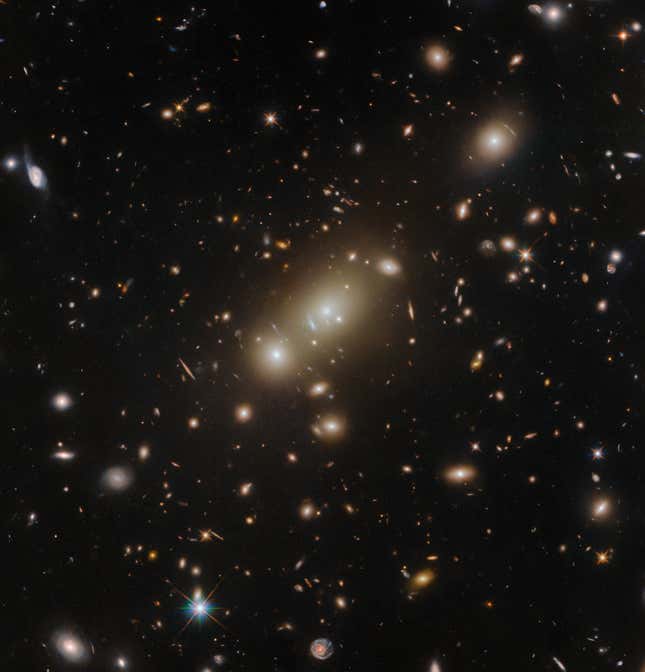
The Hubble Space Telescope is no spring chicken, having operated in space for over 30 years. But the veteran observatory soldiers on. It recently imaged a massive galaxy cluster that could hold secrets about both dark and ordinary matter.
The cluster is Abell 3322. It sits in the constellation Pictor, about 2.6 billion light-years from Earth. Galaxy clusters are just what they sound like—groups of galaxies bound together by gravity. They can clue researchers into how dark matter interacts with regular matter, as well as fundamental questions about how galaxies form and evolve.
At the center of the recent Hubble shot of Abell 3322 is 2MASX J05101744-4519179, a particularly bright galaxy. The image was taken by Hubble’s Wide Field Camera 3 and its Advanced Camera for Surveys, third-generation instruments on the telescope that image at near-infrared and visible light wavelengths.
Three galaxies in the image are brighter than the rest (two in the center of the image and one in its upper right-hand corner). The alignment of those galaxies indicates to scientists that the galaxy cluster appears to be actively forming, according to a European Space Agency release.
Dark matter is not literally “dark,” it’s just dark to us. In plainer terms, we don’t know what it is. It could be a lot of different things, or one vexing tough-to-spot particle. Dark matter hardly interacts with ordinary matter, making it difficult to learn about, and has never been directly observed.
But scientists know dark matter exists because of its gravitational effects. Haloes of dark matter manifest around some galaxies and galaxy clusters, and areas of gravitational lensing are happy hunting grounds for dark matter candidates.

Some of the galaxies in the recent image appear distorted or flattened; they are gravitationally lensed, meaning their light is being bent and refocused by the gravitational field between them and Hubble.
The two leading candidates for dark matter are Weakly Interacting Massive Particles, or WIMPs, and axions, a theorized particle named for a laundry detergent. Earlier this year, a team of astronomers found signs of axion-like dark matter in Einstein rings, particularly in lensed images of HS 0810+2554, a distant quasar. Einstein rings are spectacular circles or near-circles of light in space caused by intense gravitational lensing.
More observations of regions in space where dark matter appears to be at work will help researchers understand how the stuff comprising it interacts with the world we can see. Combined with laboratory investigations of dark matter candidates, we get closer to shining a light on some of the most hidden physics.
More: New Map of Dark Matter Validates Einstein’s Theory of Gravity